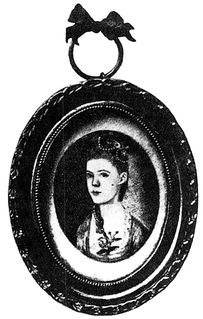Anna Green Winslow

Young ladies in town, and those that live round,
Let a friend at this season advise you:
Since money’s so scarce, and times growing worse
Strange things may soon hap and surprize you:
First then, throw aside your high top knots of pride
Wear none but your own country linnen;
Of Oeconomy boast, let your pride be the most
To show cloths of your own make and spinning.
Let a friend at this season advise you:
Since money’s so scarce, and times growing worse
Strange things may soon hap and surprize you:
First then, throw aside your high top knots of pride
Wear none but your own country linnen;
Of Oeconomy boast, let your pride be the most
To show cloths of your own make and spinning.
—A popular song in Boston in 1767
Rhode Island and Massachusetts, late 1760s
The thirteen colonies acted together for the first time by vowing not to import goods from England until the hated taxes were dropped. Sadly, that meant no English tea in the afternoon. It also meant colonists now had to make all the goods they used to get from England.
LIBERTY TEA
The British tea that patriots refused to drink and finally threw into Boston Harbor was a blend that England imported from India (you can still get it from its original shipper, Davison Newman of London). Instead, Bostonians switched to tea made with a local herb called Labrador or else drank hot chocolate or coffee.
On a chilly evening in 1766, seventeen girls and women rapped at the door of a large white house in Providence, Rhode Island. Each walked in with all the wool or yarn she could gather. They quickly sat down and began to spin and weave. They were there to protest the British taxes by making their own cloth so they wouldn’t have to import it from England.
Whether they meant to or not, they started a movement. Word spread so fast that they had to move their second meeting to a courthouse. Soon there were “patriotic sewing circles” all over New England. Four hundred spinning wheels were built in Boston alone in 1769. One patriot boasted that “some towns have more looms than houses.” Soon fashionable Boston girls wouldn’t be seen in British brocades or anything fancy-looking at all. In 1768, the entire Harvard graduating class proudly got their diplomas in plain white homespun. The students at Brown did the same the next year.
Girls blazed away at their looms. They knew their strong, nimble fingers were as important to liberty as the male fingers that would soon pull triggers. Charity Clark, fifteen, spun wool for “stockens” in her home in New York City. She wrote to her cousin in England, “Heroines may not distinguish themselves at the head of an Army, but freedom [will] also be won by a fighting army of amazones [women] … armed with spinning wheels.”
READING, WRITING, AND SEWING
There were five public schools in Boston during the Revolutionary years, but except for dame schools in which young boys and girls learned their ABCs together, they were for boys only. Parents had to pay for private tutors for girls. Anna Winslow’s father had enough money to send her to three private schools—one for reading, one for writing, and one for sewing. That’s why we have her diary today.
In 1771, a British military officer sent his twelve-year-old daughter, Anna, to Boston to get an education. Anna Green Winslow got an education, all right—just not the one her father intended. One uncle taught her the difference between Whigs (patriots) and Tories (British sympathizers). Another lectured her about politics and religion. But her aunt gave her the best lesson of all: She took Anna to a sewing circle and showed how she could help the cause of liberty.
The girls and women met at Anna’s church each morning. As the sunlight poured in and the minister stood before them reading from the Bible, each sat at a wheel spinning wool as fast as she could. Sometimes they sang together. They raced one another to see who could spin the most. During breaks they refreshed themselves with liberty tea, made from local herbs, instead of British India tea. Soon Anna began to boast of spinning feats in her diary. After a week she wrote, “Another ten knot skane of my yarn was reel’d off today.” A few days later, the girl whose diary had just weeks before been full of notes about parties and feathered hats wrote her own declaration of independence in a letter to her father: “As I am (as we say) a daughter of liberty I chuse to wear as much of our own manufactory as pocible.”
Anna’s health was poor throughout her life. She died at a relative’s home in Marshfield, Massachusetts, in 1779, at the age of nineteen.
Colonial girls began to spin yarn and weave cloth when they were very young.
